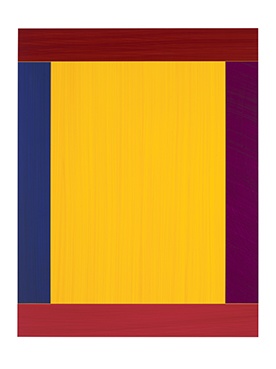Imi Knoebel
Anima Mundi (2012)
With Imi Giese and Blinky Palermo, Imi Knoebel was among the students of Joseph Beuys who, in the 1960s, developed a radical minimalist formal vocabulary. One important point of reference in the early phase of Knoebel’s career was the constructivism of Kazimir Malevich. Negating all representational function, Knoebel’s early work is defined by restrained color and geometric shapes: his trajectory leads from black-and-white line paintings to sculptures made of slabs stacked on the floor and hence to space installations. The serial work process, though it is always based on the artist’s gesture, comes together in Knoebel with the use of standardized materials from the hardware store and the free combination of the elements employed. After Blinky Palermo’s death in 1977, Knoebel’s works begin to feature color as well: in homage to his deceased friend, his next exhibition bears the title “24 Colors—For Blinky.” The edition Imi Knoebel has created for “Texte zur Kunst” recapitulates the foundations of his art: geometric structure, painterly colors, and manual execution. Four bars in different colors form a tall rectangle that holds a yellow field at its center. Since the individual pictures are painted in acrylic on synthetic foil, the traces of the application of paint remain clearly visible. Despite the uniform appearance of the works, each is unique. The title, “Anima Mundi” or “World Soul”, also suggests that Knoebel sees the interplay of shape, color, and material quality as programmatic, not just for his own creative output but for art more generally.
Imi Knoebel, „Anima Mundi“, 2012, Acrylic on synthetic foil, 46 × 35 cm, Edition: 50 + 20 A.P., numbered and signed on the back, 620,– plus shipping.

